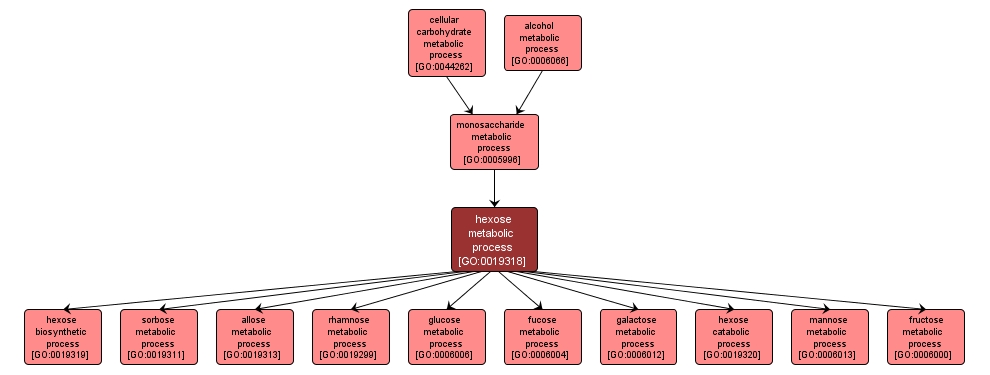GO TERM SUMMARY
|
| Name: |
hexose metabolic process |
| Acc: |
GO:0019318 |
| Aspect: |
Biological Process |
| Desc: |
The chemical reactions and pathways involving a hexose, any monosaccharide with a chain of six carbon atoms in the molecule. |
| Synonyms:
|
|

|
INTERACTIVE GO GRAPH
|














